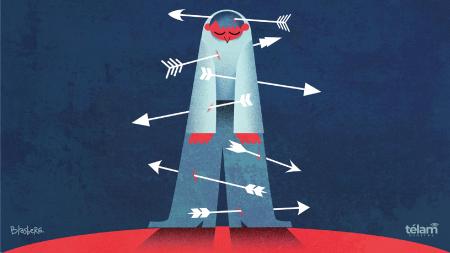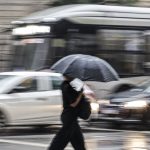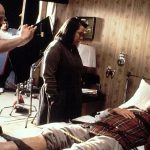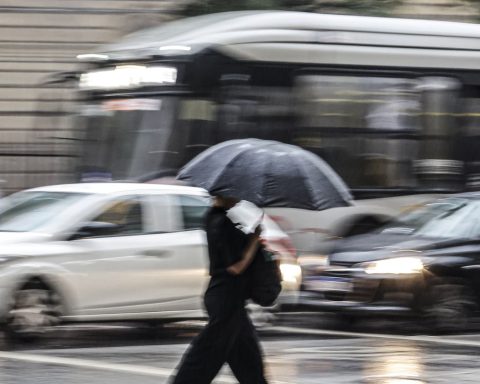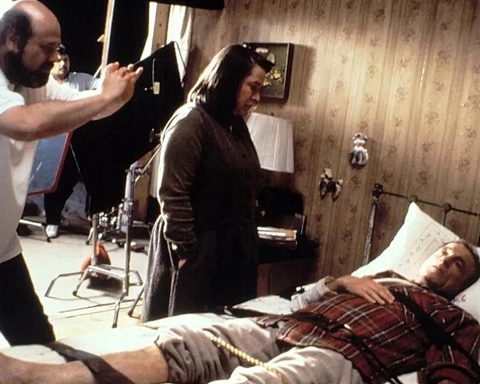Feeling fatigued and lethargic, wanting to sleep “all day”, presenting extreme sensitivity to pain or digestive problems that do not improve even with treatment are some of the symptoms that may be associated with depression or anxiety, according to specialist psychiatrists, who urged “not to stay” only in the emotional symptoms and “pay more attention” to the body’s biological responses to these conditions, which have increased “notably” in Argentina since the start of the coronavirus pandemic.
According to the World Health Organization (WHO), severe depression and anxiety disorders, the most common disorders in the world, increased by more than 25% globally during the first year of the coronavirus pandemic.
The same scenario is registered in Argentina, where these pathologies suffered an “exponential” increase and are currently the “most frequent” in psychiatric consultations, according to specialists from the Mental Health area of the Hospital de Clínicas.
However, they warn, anxiety and depression are often not quickly identified as such and are “commonly underdiagnosed” in primary health care and, therefore, “inadequately treated.”
“With the diagnosis of depression, one of the problems is that it is thought in terms of emotional symptoms, such as sadness and anhedonia (the inability to experience pleasure), which are the most ‘expected’ but not always the most noticeable. nor the only ones,” the psychiatrist María Eugenia Rojas explained to Télamhead of the Affective Disorders unit in the Mental Health service and of the Depression and Bipolar Disorder unit.
Example of these psychosomatic responses to depression include lethargy, fatigue, and a feeling of bodily heaviness that a person who is going through a depressive picture can notice on a sustained basis, as well as irritability, headache and some digestive problems “that even with treatment do not go away”.
In addition, They may suffer from hyperalgesia, which is sensitivity to pain and an extreme reaction to it, or also present “cognitive, attention, concentration or memory failures” or daytime hypersomnia, that is, the need “to sleep all day and thus not be motor and cognitively active,” explained the doctor.
“Many times, by not considering a more comprehensive approach, these patients are not diagnosed correctly and spend their time going through different specialists because they do not have the ‘classic’ symptoms of depression, but rather some that are more physical,” he added.
In this regard, the specialist warned that, in the course of a depressive picture, it is possible to “erase the limit between the psychological and the biological”Therefore, it is important to “pay attention to these clinical manifestations, which in many cases are the body’s biological response to this depression.”

“Patients are not lying when they report physical symptoms, they really suffer from it. The challenge is not to think of the human being as divided, but as a whole in which the cause of these physical symptoms can be linked to the emotional,” he assured.
This does not mean that each diagnosis “has always to be something emotional,” but that it is about “carrying out a comprehensive medical search,” the psychiatrist emphasized.
In cases of anxiety disorder, meanwhile, palpitations, sweating, chest pain, dizziness, a feeling of instability or choking, and tremor may occur, among other symptoms.
“In general, these symptoms are accompanied by the idea of being able to die, of being able to ‘go crazy’ or lose control and may be accompanied by feelings of depersonalization or derealization, of feeling strange in the environment,” he explained, for his part. , the doctor Cynthia Dunovits, coordinator of the Anxiety unit in the Mental Health department of the Hospital de Clínicas.
Like sadness, not all anxiety “is necessarily pathological.”“, but it supposes “a response to a sensation or experience of threat, to a future risk” that all people go through “periodically”.
“When these symptoms are sustained over time, when it begins to generate difficulties in the patient’s functionality -at work, family, social ties, etc.-, that’s when we have to think that perhaps it goes beyond ‘normal’ sadness. or adaptive and we are facing a major depressive picture,” explained the doctor.
Not being able to recognize an anxiety disorder early on that persists over time without treatment “generates dysfunction in the patient” since, faced with a certain threat that “exceeds” the person, who prefers to avoid the situation and thus “ends up abandoning projects, places, people,” he said.
Panic attacks: they increasingly affect young people
Panic attacks, episodes linked to anxiety disorders, are increasingly affecting more and more young people between the ages of 20 and 30, the age group in which they have the “highest incidence”, according to medical specialist Cynthia Dunovitswho emphasized the importance of providing tools from psychoeducation to those who present this condition.
The panic attack, explained the doctor, is an abrupt or acute episode that lasts between 5 and 10 minutes where the person experiences “a feeling of imminent death or lack of control”, accompanied by “physical symptoms of activation, such as sweating, palpitations and perspiration”.
Since the start of the coronavirus pandemic and especially once “normality” has returned, more and more people are suffering from these panic attacks, which mostly affect “women and young adults between the ages of 20 and 30,” according to the coordinator of the Anxiety unit in the Mental Health department of the Hospital de Clínicas.
That it affects this age group is “especially” problematic since panic attacks are usually followed by the development and installation of “avoidance behaviors”, that is, when the threat surpasses a personto the point of being able to unleash an attack, he chooses to avoid facing it.
“This is how they begin to prefer not to take an exam because they know they are going to block themselves, not go to certain places or abandon projects, at an age when they are just beginning to project their careers, their lives, their partners,” explained Dunovits. “The development of avoidance behaviors at this age is limiting for this age group,” he added.
In this sense, the doctor highlighted the importance of psychoeducation and providing tools to the person suffering from panic attacks so that they “Take control over your symptoms and your condition”.
“It is important that we explain to them what is happening to him, why it is shot and that they know that, despite what they think (of the idea of death or imminent danger), nothing is going to happen to them anyway and (the episode ) will limit itself over time,” he said.
Psychoeducation, the psychiatrist continued, is necessary so that the person “feels with sufficient resources to face the threat that anxiety implies” and that, in subsequent opportunities, can “put those resources into practice.”
“Not every anxiety symptom has to lead to a panic attack as far. To the extent that you can slow the escalation of symptoms, it may not lead to an episode,” she concluded.
